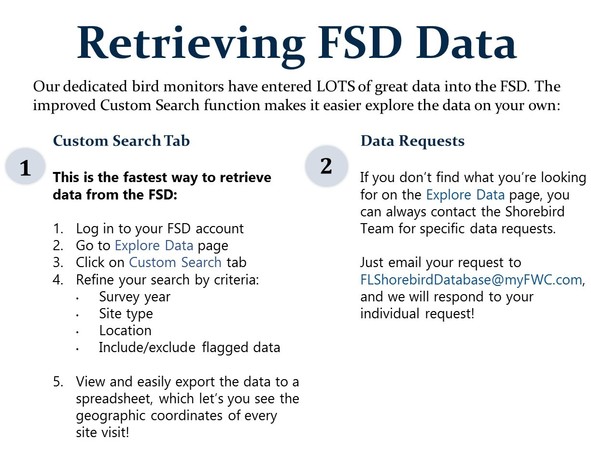Events:
December 2: Satellite Beach; Ocean Reef Beach Festival
December 9: Rookery Bay; Birds of the Beach with Adam Dinuovo
December 15 - January 5: Audubon's 118th Christmas Bird Count
Announcement:
The local shorebird partnership's post-season meeting notes are now posted on the Florida Shorebird Alliance website.
Prepare for Next Breeding Season &
Participate in Winter Surveys!
As winter slowly descends onto Florida's beaches, it is a great time to prepare for the next breeding season. The Florida Shorebird Alliance website hosts numerous resources to help you prepare. Maintain your identification skills by reviewing the various Species' Aging Guides. Brush up on posting parameters with the Posting Guidelines Handbook. If you're feeling crafty, email us to receive the simple instructions for building your own chick-a-boom - the chick elevator that helps return chicks back to rooftop colonies.
And for those of you who have experience identifying wintering shorebirds, please consider participating in FWC’s winter surveys. Our non-breeding shorebird protocol allows us to determine where, when, and how wintering birds use habitats at the local level, and helps us identify where we should focus management and conservation efforts. It also allows us to document banded birds and track winter site fidelity and movement patterns. To participate this winter, please contact Janell.Brush@myfwc.com.
In addition to the FWC surveys, there are two other chances to participate in winter surveys: the International Piping Plover Census beginning in late January, and the Winter Shorebird Survey (a.k.a. the First Friday in February Survey). Stay tuned to the January Wrack Line for more details about those surveys!
 
 |
|
Remarkable Piping Plovers Spotted in Cedar Key!
Pat & Doris Leary recently spotted one of the captive-reared Piping Plover chicks from the Great Lakes region (photo). This bird originally came from one of the two nests laid in Pennsylvania for the first time in 60 years!
Thank you to all the dedicated surveyors who help track the survival and movement of these rare and beloved plovers!
|
|